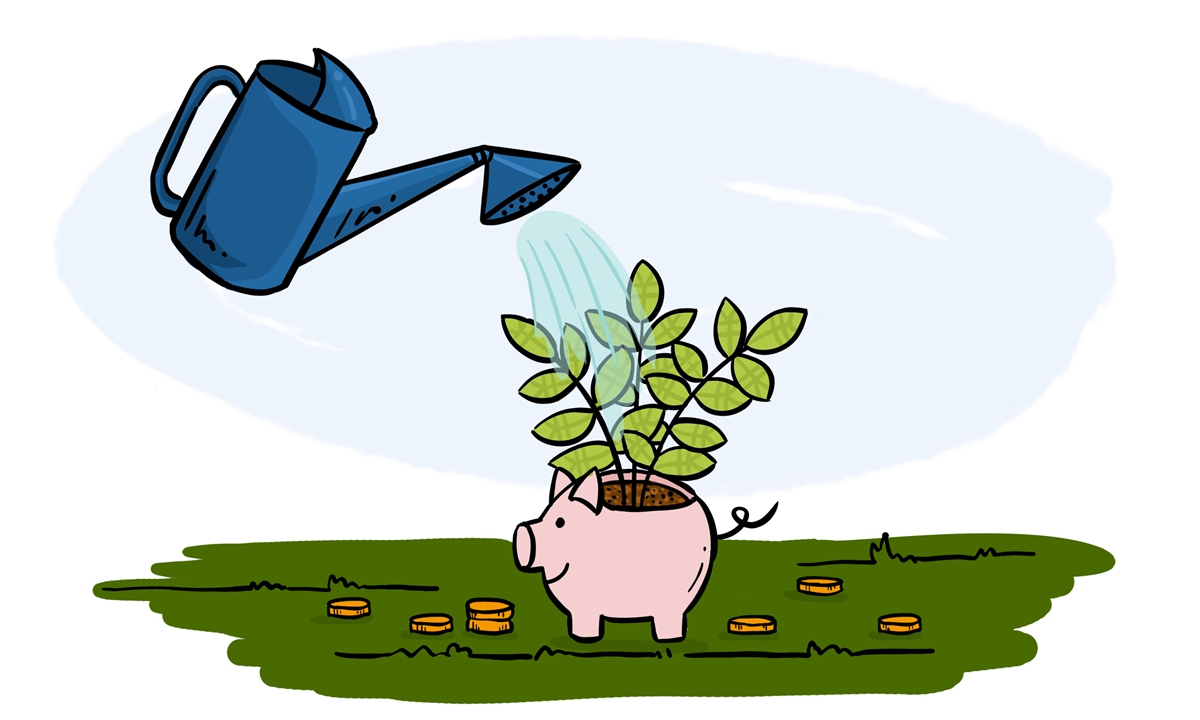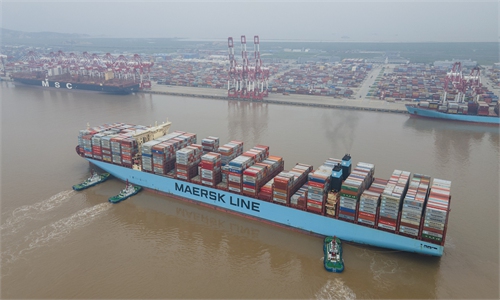COMMENTS / COLUMNISTS
China’s peculiar system propels meteoric economic takeoff

Illustration: Chen Xia/GT
As 2020 is rapidly winding down with the once-in-a-century coronavirus still taking its toll in many countries, China, successfully controlling the health crisis, is busy choreographing the next Five-Year Plan to make its economy even bigger and stronger by 2025. The country's vision for 2035 is to double its present $15 trillion economy to reach $30 trillion to become a moderately prosperous nation in the world.China's distinct political and social system will continue to provide a sturdy foundation to back up its economy's incessant jumps that the world has witnessed, elatedly by some countries or jealously by others, ever since 1980 when Chinese leadership launched the reform and opening-up drive. Chinese people's wisdom and diligence have helped propel the economic takeoff.
To adapt to a changing geopolitical structure in the world, China's leadership has meted out a brand-new economic strategy - focusing on comprehensively strengthening China's own supply lines by invigorating homegrown innovation, and nurturing and enriching the world's largest middle class, which is widely regarded as bold and inspirational.
Though many in the West have tried for many years to vilify and demonize China's political system, the peculiar governance of Chinese characteristic has proved to be highly efficient, resilient and professional in taming challenges - like the 2008-09 financial crisis and the novel coronavirus, and always able to achieve the planned development goals.
The system was particularly noted earlier this year as the country was inflicted with a sudden onset of the COVID-19 public health crisis. China was impressive in ordering a province-wide shut-down in Hubei for 76 days and galvanizing thousands of medics and resources from all other provinces to come to the help of the isolated province.
After putting down the pathogen's onslaught in Wuhan and Hubei, China succeeded in containing the contagious virus as early as May, from which point the battered economy has recovered and is now expected to grow by more than 2 percent this year, and more than 8 percent next year. The top-down political structure in which the whole country concentrates resources to overcome a challenge as formidable as the virus is vindication of Chinese system's peculiar strength.
In sharp contrast, the US' political system merely tumbled to cope with the coronavirus which is now staging a voracious resurgence, overwhelming the country's hospitals. More than 270,000 Americans have been killed by the disease, and its economy is in doldrums.
Under the US-style democracy, the two political parties of Republicans and Democrats were seen fighting each other on whether their countrymen should wear masks in public places to shield the spread of the virus. And, after seeing all the societal tumult, racial strife and street fighting, the country remains in deadlock over election lawsuits, conspiracy theories and political lies, more than one month after the balloting, and the sitting president still refuses to concede his defeat. How long the political drama will evolve and how it will end remain unknown.
To impede China's development and technological advance, the Trump administration launched a relentless trade and tech war in its hope to cut short the streak of China's non-stop economic growth, similar to what the US has done in its history to hold back Japan, the UK, the Soviet Union and the EU from surpassing the sole superpower.
In a recent interview with The New York Times, US president-elect Joe Biden said his administration won't drop Trump's tariffs immediately. Presumably, Trump's cut-off of crucial tech supplies to leading Chinese companies like Huawei and dozens of other tech firms are unlikely to be relieved soon.
So, by all metrics, China is obliged to ratchet up efforts to strengthen its own supply lines and innovation labs and research works, while skewing its highly lucrative market to its friendly neighbors and the "Belt and Road" partners.
The policymakers in Beijing have put forward the visionary "dual circulation" economic growth roadmap, pivoting to explore and develop China's colossal domestic market and at the same time enlarging and enriching the middle class, with the two reinforcing one another. Government officials predict the country's middle class population will expand from present approximately 450 million to 650-700 million by 2030.
Guided by the new and bold economic playbook, the country's mammoth domestic market demand will be fully explored and upgraded, and the magnet of China's economic opportunities will only grow in the eyes of foreign investors and trade partners.
Naturally, Chinese consumers' choice of buying EU's Airbus or US' Boeing planes, German-made cars or American-made cars, mineral ores from Brazil or from Australia, agricultural products from Argentina or from Canada, insurance policies from Swiss insurers or British insurers, will be up to themselves. The standard is clear-cut and universal that governments' political decisions impact consumer behaviours.
The author is an editor with the Global Times. bizopinion@globaltimes.com.cn


